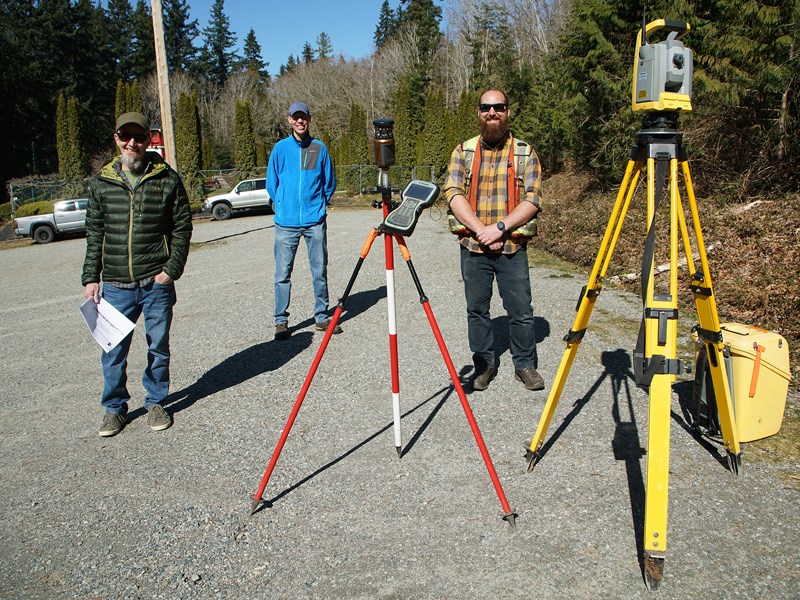Work is beginning on locating the Anderson sawmill on grounds adjacent to Powell River Historical Museum and Archives buildings.
On March 20, Polaris Land Surveying staff members were on the property, mapping out the area on which the sawmill will sit. The exhibit will be situated on the upper portion of the property between the museum and Putters Mini Golf.
Museum executive director Derek Kowalchuk said ample funding for the project has come from Powell River Community Forest.
“We are working with the city and we’re trying to get this restarted; we’ve been working on it for a few years,” said Kowalchuk. “We want the organizations that have funded us to be aware we are in the process of restarting. We were waiting for certain things to fall into place.”
Anderson sawmill artifacts are currently being stored at the Paper Excellence mill in Townsite.
“They have been storing the artifacts ever since we repatriated them a few years ago,” said Kowalchuk. “All of the parts are there. Paper Excellence has been very generous to store them for us.”
Everybody working on the project is local, said Kowalchuk.
According to the museum, the sawmill, which used to be situated at Mowat Bay on Powell Lake, will be reconstructed as an exhibit on the museum grounds on a strip of land at the top of the museum parking lot. The location has been approved by the city planning department.
“The exhibit will act as a prominent tourist attraction and as signage for the museum,” said Kowalchuk. “The mill exhibit will not only preserve some historical equipment, but also present some of the more colourful aspects of Powell River’s history to residents and visitors.
The goal is to partially reconstruct the mill as an open-air, wheelchair-accessible public exhibit, that is non-operational, added Kowalchuk.
“The proposal is to mount the mill in such a fashion that the large steam pistons and belts beneath the mill are exposed to view, but not accessible,” he said. “The mill will be covered, as it was historically, by a roof to protect it from the rain.”
Kowalchuk said the exhibit will be accompanied by interpretive panels on the mill components in the historical museum and the forestry museum.



